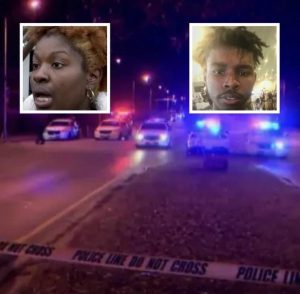In January 2019, a tragic incident in Baltimore County led to the death of 20-year-old Dion Lamar Taylor. The event began with a reported carjacking involving Taylor and two other individuals, targeting a pizza delivery driver in the Woodlawn area. According to authorities, the suspects forcibly took control of the delivery vehicle and fled the scene. The police were alerted and began pursuit shortly afterward. The chase, which spanned several roads, ended at the intersection of Northern Parkway and Highgate Drive. At this location, the suspects decided to abandon the moving car, jumping out in an effort to escape on foot. As Taylor ran from the vehicle, he was fatally struck by a police cruiser involved in the pursuit. Law enforcement officials stated that the officers on the scene followed proper protocol during the incident. Despite these claims, the circumstances surrounding the collision sparked significant controversy and drew emotional reactions from Taylor’s family.

Taylor’s mother, Teisha Cook, was left devastated by the sudden loss of her son. She questioned the police’s actions and demanded a thorough explanation. In statements to the media, Cook described her son not as a criminal, but as a quiet, home-loving young man who rarely ventured far from his neighborhood. Her portrayal painted a contrasting image to the one presented by law enforcement. Cook’s grief was compounded by the lack of clarity and accountability she felt was missing from the investigation. Her calls for justice highlighted a broader concern often raised in police-involved deaths, particularly those involving young Black men in the United States. She argued that her son’s life should not have ended the way it did, and she sought transparency in understanding what exactly happened during those chaotic final moments.
As the case unfolded, further details emerged. During the police chase, a handgun was reportedly tossed from the vehicle by one of the suspects. This discovery heightened the gravity of the incident and added to the charges against the individuals involved. Authorities arrested 16-year-old Taron Kelly in connection with the carjacking. Kelly faced multiple charges, including armed robbery, and was processed through the juvenile justice system. He was believed to have been one of Taylor’s companions during the attempted getaway. The third suspect, however, managed to escape and was not immediately apprehended. Law enforcement continued to search for him, using both local tips and surveillance to track his whereabouts.
The officer who struck Taylor with the police cruiser was placed on administrative leave pending an investigation. This is standard protocol in police-involved fatalities, allowing time for internal review and any necessary legal proceedings. At the time, the department emphasized that the leave was not an implication of wrongdoing, but a precautionary measure. However, critics pointed out that administrative leave often leads to a lack of consequences in similar cases, leaving families like Taylor’s feeling abandoned by the justice system.
The incident stirred broader conversations within the Baltimore community about police tactics, accountability, and the treatment of young Black men. Community leaders, activists, and residents voiced concerns over the use of force and the strategies employed during high-speed chases. Some argued that the danger posed to both suspects and bystanders during such pursuits might outweigh the benefits. Others pointed to the need for increased training and more effective de-escalation methods. The case of Dion Lamar Taylor became a local flashpoint in this ongoing dialogue, symbolizing the complex tensions between law enforcement and the communities they serve.
Beyond the legal and procedural aspects, Taylor’s story touched on deeper societal issues. His mother’s insistence that her son was not a hardened criminal reflected a common struggle among families of those involved in police altercations. In many cases, the public narrative quickly labels individuals based on their final moments, without understanding their full story. Cook’s defense of her son was not only an effort to preserve his memory, but also to challenge assumptions that often go unexamined. She shared stories of Taylor’s personality, his interests, and his close relationships with family, hoping to humanize him in the eyes of the public.
In the weeks following the incident, local media coverage brought attention to the questions raised by Taylor’s family and the community. Investigative reports probed the events leading up to the crash, analyzing police dash cam footage and interviewing witnesses. Public records were scrutinized to determine whether proper procedures had truly been followed. Meanwhile, advocacy groups offered support to the family, calling for independent investigations and policy reforms. These groups stressed the importance of accountability and transparency, especially in cases involving young people of color.
As the legal process moved forward, the community continued to grapple with the aftermath. Memorials were held in Taylor’s honor, drawing crowds of friends, neighbors, and local activists. These gatherings served not only to mourn his death but also to raise awareness about the broader issues at play. Organizers used the platform to demand changes in how police handle pursuits and how fatalities are investigated. The presence of youth at these events signaled a growing awareness among the next generation about their rights and the importance of civic engagement.
Although the case did not receive national media attention, it resonated deeply within Baltimore and among those closely following issues of police reform. Taylor’s death was not just a statistic—it was a personal loss that rippled through a family and a community. His story became part of a larger narrative about justice, perception, and the value of a young life lost too soon. In the years since the incident, his mother has continued to advocate for changes that she believes could prevent similar tragedies in the future. Her resilience reflects the determination of many families who, in the face of grief, choose to push for a system that they hope will one day deliver not only safety but fairness for all.





